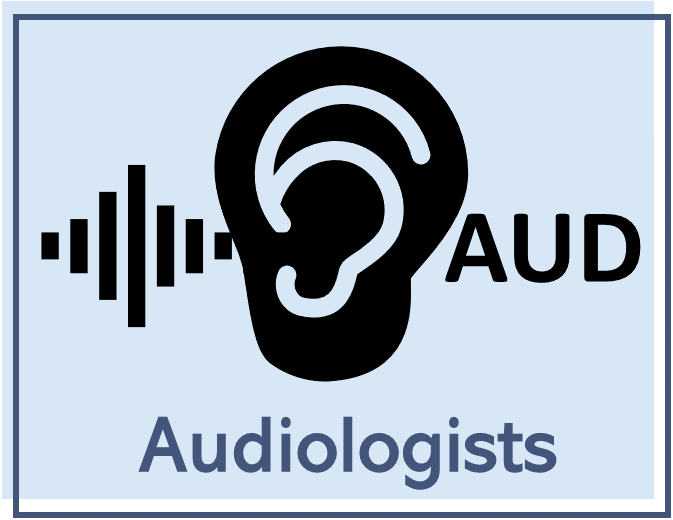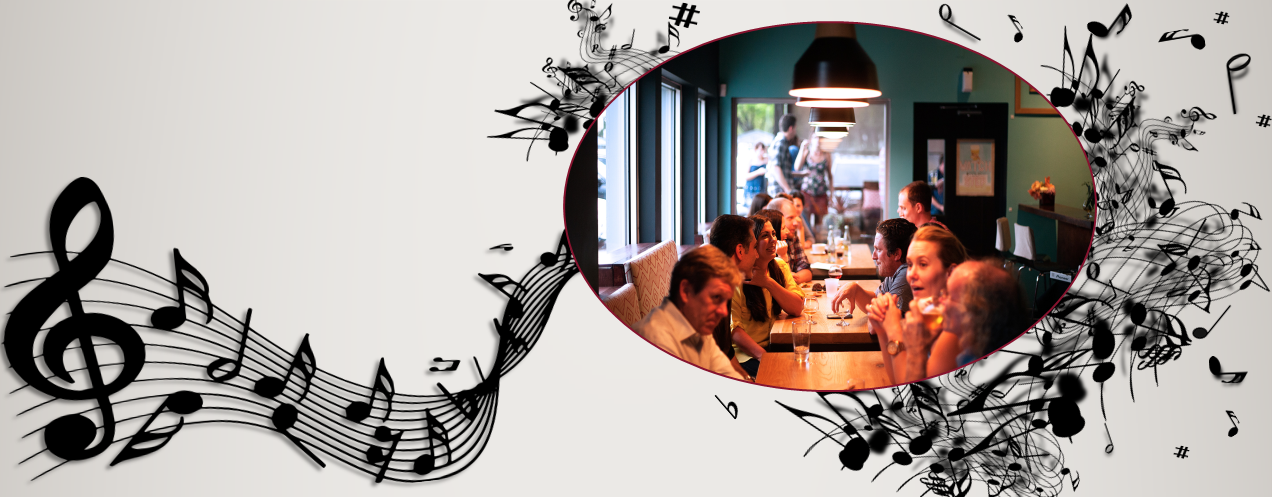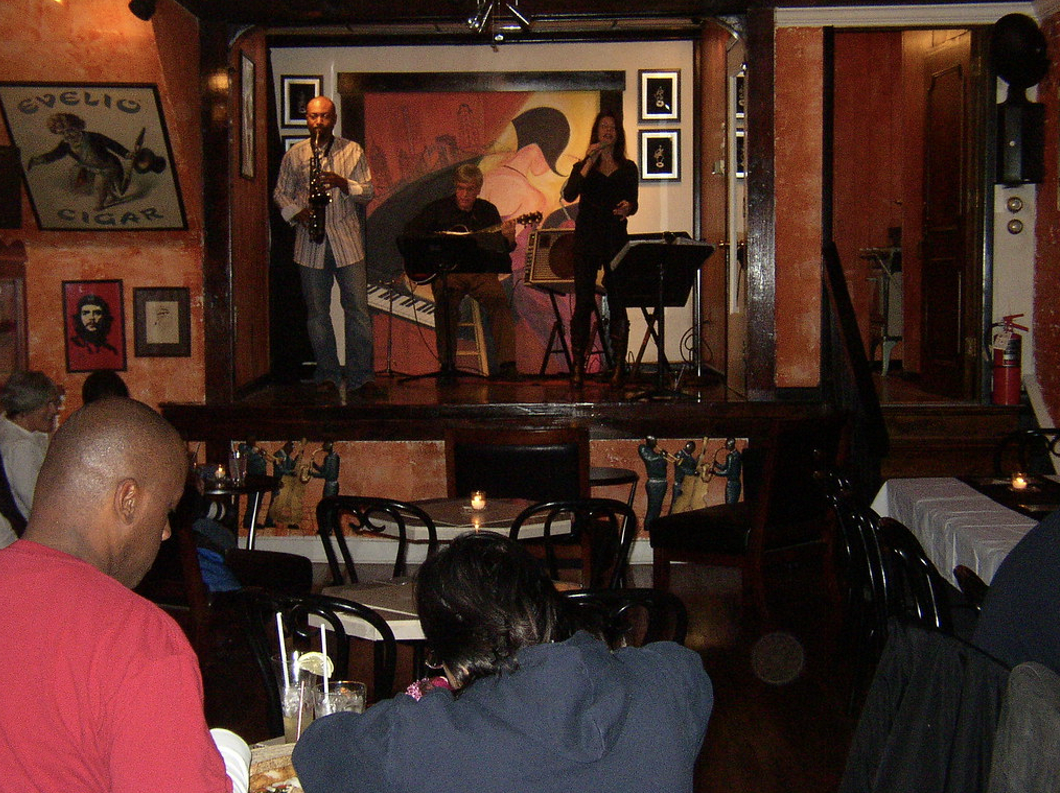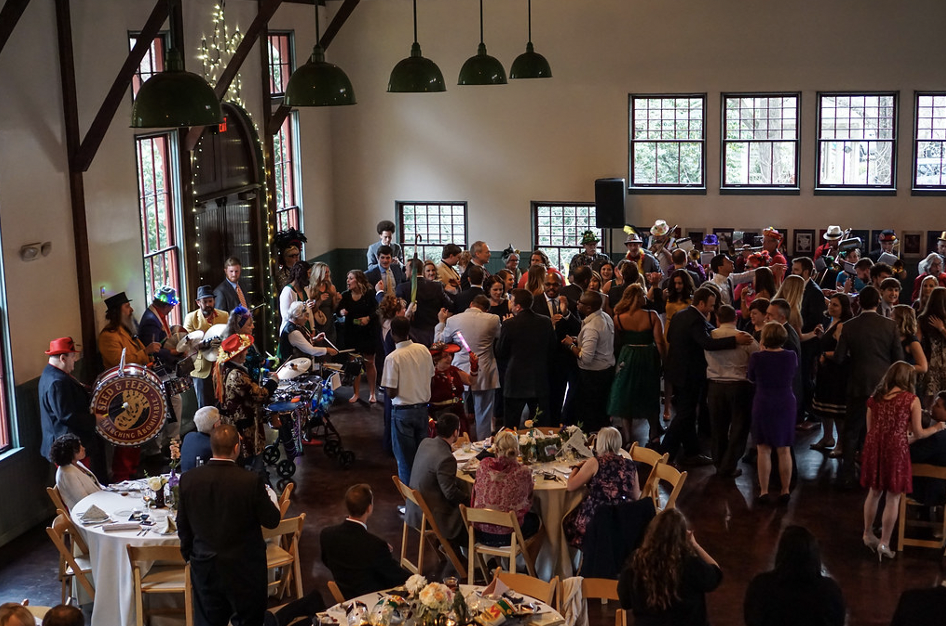See also: Articles on Music, Hearing Loss, and Hearing Devices
As you read this website, keep in mind the following:
-
People with hearing loss can differ in many ways.
-
Some information may be more applicable.
-
Pick and choose the information most useful for you.
Background Music as a Barrier to Communication

1, 2
This page is primarily for hearing professionals. Other links at this website may be useful for your patients:
This page is a quick references for audiologists about music as background noise.
-
Audiology appointments are already busy. It can be difficult to find time to counsel patients on music, too.
-
Audiologists can download these resource materials for patients who ask about music.
Why discuss background music as a barrier to communication with cochlear implant or hearing aid users?
-
Background music is often unavoidable in social events, restaurants, religious services, and other everyday experiences.
-
Background music can make conversation difficult to understand.
-
Background music creates listening effort, which is cognitively and emotionally tiring.
-
Your patients may avoid social situations with background music; this can be socially isolating.
-
Patients may lack effective approaches for reducing or coping with noisy background music.
Social situations with music (wedding receptions)--- I leave.


Background music undermines good spoken communication.
-
Split attention: Music and conversation may co-occur. For example, the listener’s attention may shift back and forth between listening to a jazz combo and the voices of their conversation partners.
-
This increases cognitive load.
-
Split attention can be especially difficult for older patients.
-
-
Effortful listening: Trying to understand speech AND music can be frustrating and exhausting.
-
Background music can mask speech.
-
Song lyrics can compete with the conversation topic.
-
People with hearing loss may have to “nod and guess” when spoken communication cannot be deciphered.
-
When I go to a location that has music during a function (example wedding), music sounds like background noise to me. I cannot enjoy both music and conversation together.
Reducing or coping with noisy background music
Many public places and social events have a lot of background music and noise. This makes verbal communication exhausting and difficult.
Reducing or coping methods break down into 3 categories:
-
Planning ahead
-
Using problem-solving strategies
-
Self-advocacy
The patient page is a counseling resource based on research and recommendations from CI and hearing aid users. It describes the following:
-
Planning ahead can sometimes ‘create’ an easier listening environment. For example, making reservations for days or times the restaurant is less busy or asking to reserve a private room.
-
Problem-solving strategies can help CI and hearing aid users cope in complex listening situations. For example, sitting with your back to a corner to reduce the amount of sound coming from as many directions.
-
Self-Advocacy involves looking out for your own needs and speaking up for yourself in settings where background music is a barrier to conversation.
Here are additional resources pages for your patients:
-
Link to patient self-efficacy page
-
Link to patient self-advocacy page
If I’m going to be in a restaurant, I will often ask for a corner or a quiet table. Sometimes I will ask to have the music lowered.
I’ve trained my friends to sit on my good ear side so I can hear them talk and also hear music./Single-sided deaf CI user
Click here to view Decision Trees, which illustrate step-by-step problem solving for planning for going to a noisy restaurant.
Suggested reading:
This article discusses the multifaceted and dynamic experiences of music in everyday life.
Gfeller, K., Driscoll, V., & Schwalje, A. (2019). Adult cochlear implant recipients’ perspectives on experiences with music in everyday life: A multifaceted and dynamic phenomenon. Frontiers in Neuroscience, 13, 1229. https://doi.org/10.3389/fnins.2019.01229
Click here to review references used in preparation of this website.
1. All images on this website are used under Creative Commons or other licenses or have been created by the website developers.
2. Click here to access the sources of images on this page.
